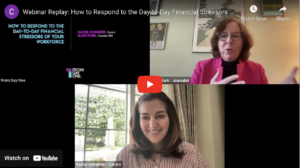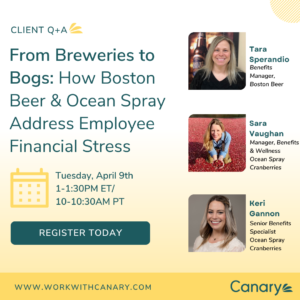Updated: Aug 7, 2020
This article was originally written and published by the Aspen Institute and Commonwealth. Rachel Schneider, Canary CEO is a co-author.

Financial insecurity is increasingly common among households in the United States (US). Over a quarter of families in the US report that it is difficult to get by, or they feel they are just getting by. In 2014, almost 60% of US households experienced at least one financial shock, with over half of those households suffering lasting consequences due to subsequent struggles to make ends meet. These statistics underscore the need for both new ideas and deeper investigation of existing practices in order to design a 21st century social safety net that delivers financial security for working families.
VIEW THE EXECUTIVE SUMMARY
VIEW THE FULL REPORT
In this context, employee hardship funds — a little-known mechanism to help workers who experience a disaster-related or personal financial hardship — warrant more attention. The way that most of these funds work is that workers and the company contribute into a fund, and workers can then apply for cash grants from the fund. Hardship funds generally try to help employees when disasters strike, or other unexpected events occur.
Seeing that this under-the-radar practice was growing, the Aspen Institute Financial Security Program (Aspen FSP) and Commonwealth partnered to learn more about how hardship funds work and benefit employees and employers.
Employee hardship funds are not a replacement for sufficient wages and benefits, nor are they a comprehensive workplace financial health strategy. However, they are part of a hidden social safety net; and they provide something unusual and important within the panoply of financial supports being recommended to help workers who lack financial security: a flexible, quick, cash grant in a moment of need.
Aspen FSP and Commonwealth are grateful for generous support for this research from the Walmart Foundation.






